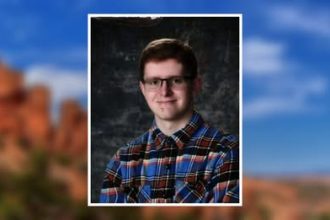In the woods of South Knoxville, Tennessee, a haunting mystery lingered for over five years. On May 20, 2020, the Knoxville Police Department stumbled upon human remains in a wooded area near Overbrook Drive, tucked away off Chapman Highway. The discovery, found in what appeared to be a makeshift homeless encampment, was shrouded in enigma. The remains were badly decomposed, leaving investigators with little to work with. Initial examinations at the Knox County Regional Forensic Center suggested they belonged to a man, likely between 55 and 70 years old, but his identity and the cause of his death remained elusive. Despite exhaustive efforts using conventional forensic methods, the man remained a John Doe, his story buried in the shadows of an unresolved case.
But hope was not lost. In 2023, a breakthrough emerged through a bold initiative to breathe new life into Tennessee’s coldest cases. The Knox County Regional Forensic Center, fueled by a 2024 Community Project Funding request championed by U.S. Congressman Tim Burchett, turned to cutting-edge science. A sample of the remains was sent to Othram, a trailblazing private DNA laboratory in The Woodlands, Texas, renowned for its forensic genetic genealogy expertise. Othram’s mission: to unlock the secrets held within the degraded DNA and give a name to the nameless.


This August, Othram’s scientists delivered a pivotal lead. Using advanced forensic genetic genealogy, they uncovered potential relatives in Michigan, a state far removed from the Tennessee woods where the remains were found. Investigators from the Knox County Regional Forensic Center reached out to a family member—a brother—who revealed a heart-wrenching detail: he had not seen or heard from his sibling in 22 years. The brothers, estranged for over two decades, had lost touch, and no missing person report had ever been filed. The absence of such a report had made the case even more challenging, as the man’s disappearance had gone unnoticed by authorities.
To confirm the connection, the family provided a DNA sample. Othram’s meticulous analysis compared it to the genetic profile extracted from the remains, and the results were undeniable: the Knox County John Doe was Gerald J. Forsman, born on February 27, 1958, in Livonia, Michigan. At the time his remains were discovered in 2020, Forsman would have been 61 years old. The identification marked a profound moment of closure for a family long separated and a triumph for the forensic team that refused to let his story fade.
The cause and manner of Forsman’s death remain undetermined, with no signs of blunt force trauma or foul play detected. Yet, the significance of this resolution transcends the unanswered questions. “This is a big deal for us,” said Chris Thomas, director of the Knox County Regional Forensic Center. “We found his brother, who lives in Michigan, and he is in the process of making arrangements for his remains.” The identification not only restored Forsman’s name but also reconnected a family fragmented by time and distance.
This breakthrough is the eighth cold case resolved through Congressman Burchett’s 2024 initiative, a testament to the power of innovative science and determined collaboration. The funding, secured through the Bureau of Justice Assistance, enabled the forensic center to send samples from 13 unidentified remains, spanning cases from the 1980s to 2023, to Othram for testing. Forsman’s identification underscores the transformative impact of forensic genetic genealogy, a method that combines DNA analysis with genealogical research to trace distant relatives and solve cases once deemed unsolvable.
Othram’s state-of-the-art technology has become a beacon of hope for law enforcement agencies nationwide. By extracting and analyzing DNA from even the most degraded samples, the lab has cracked numerous cases across Tennessee and beyond, from identifying long-lost victims to unmasking perpetrators in decades-old crimes. The Knox County Regional Forensic Center, with its unwavering commitment to giving every decedent a name, continues to work tirelessly, ensuring no one is forgotten.
As Gerald J. Forsman’s remains are prepared to return to his family, his story serves as a poignant reminder of the human lives behind every cold case. For the investigators, scientists, and advocates who made this moment possible, it’s a victory of perseverance and innovation—a step toward justice and closure for families who have waited far too long. In the words of Knox County Mayor Glenn Jacobs, “The staff at the Regional Forensic Center is skilled and I’m grateful for the care they put into the job they do. They always work to make sure no one is neglected.” For Gerald J. Forsman, that promise has been fulfilled. His name, once lost to the woods of Knoxville, has been reclaimed, and his story, at last, can be told.



